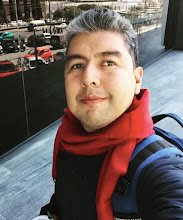 |
| Reading Alebrijes by Cecilia Reyes |
As a postdoctoral fellowship, I am not able to get into the university facilities to do some office or experimental work in the laboratory. That means that all the experimental work is on a pause. Well, this situation brings me to the next question.
Is it healthy to continue working during vacations ? I mean, doing some reading or drafting a manuscript for a scientific publication.For Ph.D. holders who are working right now on Mexican universities and who already got the National Research system grant (SNI-CONACYT) maybe it is a duty to work during vacations because of the process to obtain a product (student graduation, scientific publication, patents as innovation ) take a lot of time. For those who are not familiar with SNI systems, every three years we are evaluated and if we do not fill the minimum requirement to maintain the grant then the membership and grant are retired.
I remember that when I was a Ph.D. student from 2013-2017 at UNAM, we used to work during vacations because when there is a big resting time we usually got out of focus from the research project. In my experience, I always recommend my colleagues to not take vacations during the thesis writing process because there is a risk of losing focus or inspiration. But now is slightly different.
Taking vacations, rest and go with your family but maybe it is ok but I thin not full time. For example in my experience, I do nothing related to work during the two weeks but right now I begin to feel not productive. I react to this feeling by doing some activities called "Hobbies".
I used to do three constant activities: Reading, programming learning and right now writing.
Sometimes these activities are not related to science, for example, my reading motivation of this year is to be able to answer the following questions: What is it happening outside of my country in a political way?; How the human being got here to the actual world?. An, of course, be present about the environmental situation.
This is the last vacation week: What are you going to do? Travel, Read, Vist your friends, Go with your Family, Work or maybe learn something new.



